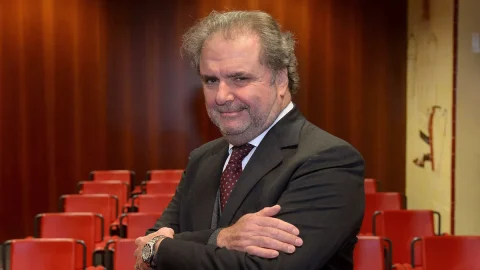Global growth will slow down as expansionary fiscal policies are eased, financial markets will face a period of greater volatility, but Italy will continue to grow.
2022 BETWEEN BOTTLES AND INFLATION
These are the forecasts for the two-year period 2022-2023 of the Intesa Sanpaolo Studies and Research Department, according to which "the outlook for the world economy is currently very uncertain" above all due to the persistence of supply bottlenecks and the emergence of symptoms of excess question in the United States. Despite this, real growth for the economy will remain robust also in 2022 (+4,6%), despite the pandemic and the deceleration of rebounds. “The COVID-19 pandemic hasn't stopped affecting the global economy, even though we are now less concerned about the consequences on aggregate demand and more about prices,” the report reads.
Mixed news on inflation, which according to Intesa's Studies and Research Department will drop next year “due to the lower contribution of the prices of energy goods and services. On the contrary, underlying inflation could rise further”. In any case, we will not see scenarios of "major inflation" such as those experienced in the XNUMXs: "the changes in the labor market and in the objectives of monetary policy exclude a repetition of that experience", the economists assure.
Against this backdrop, the turnaround in the monetary policy cycle is expected to take place faster than assumed in September.
THE FORECASTS FOR ITALY
It's Italy? For our country, the Research Department of Intesa Sanpaolo forecasts an increase in GDP of 6,2% for 2021 and 4,3% for 2022. The pre-Covid levels will already be reached within the first half of 2022, "also if the output gap is likely to close only in 2023, and the recovery of pre-pandemic growth rates is postponed, in our scenario, to 2024”, underlines the report.
On the demand side, growth will still be driven by consumption, which will expand by more than 2022% in 5, while investments will slow down after this year's double-digit pace, while maintaining a very robust tone. The estimate is +6,3% in 2022 after +15,8% in 2021, a performance possible thanks also to the effects of the tax incentives and infrastructure programs included in the PNRR. However, there are risks on the horizon deriving "from the effects of supply bottlenecks and the energy shock, as well as from developments in the fourth wave of the pandemic".
INFLATION
Inflation in the euro area has accelerated rapidly in recent months, reaching 4,9% yoy in November (the highest since a comparable series has existed, ie at least since 1998). “The continued hikes are explained by one-off factors (reinstatement of VAT rates in Germany, rebound in energy prices and rising input prices due to supply chain problems in industry) and, to an extent less, from the reopening effect (price increases due to the return of demand in the service sectors previously subject to restrictions)”, analyzes the report.
What will happen next year? The Studies and Research Department of Intesa Sanpaolo continues to believe that the rise in inflation is transitory, "but it is expected that it will not disappear quickly". “The forecast scenario includes pronounced dynamics of the energy price – they add – The increase in the price of natural gas and the consequent knock-on effect on oil will keep the growth of energy prices in double digits also in the first half of 1; the drop that will follow from the spring quarter will in any case keep prices higher than in 2022, due to the low level of stocks".
According to forecasts, the general price index is expected to grow by 3,1% next year, accelerating from the 2,6% estimated in 2021. The main contribution will come from the underlying index (about 50%), while the energy will explain about 40% of the price growth. “The trend over the next year should be downward, with a possible peak in March and April (at 3,6%) and a minimum in November (at 1,9%)”, concludes the report.





